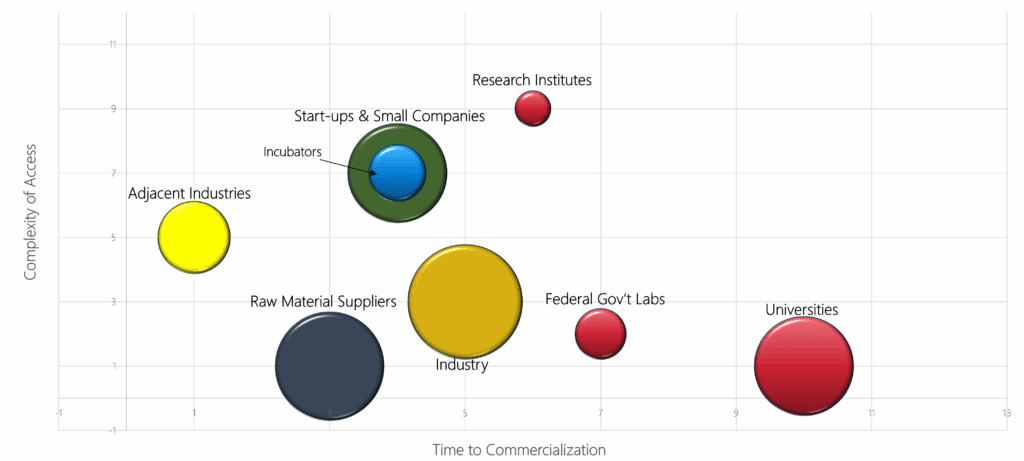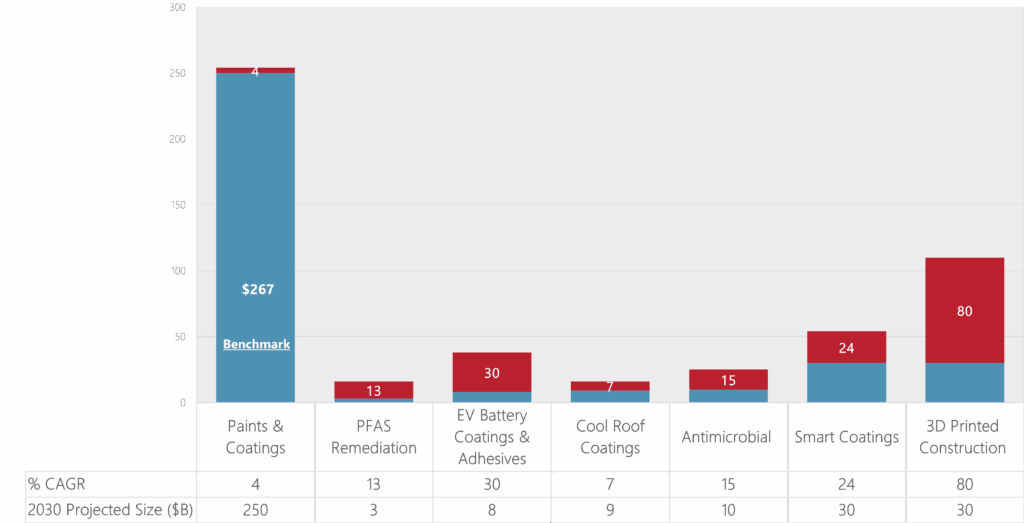Table of Contents
Exploring the intricate interplay between market dynamics, regulatory environments, funding ecosystems, and the commercialization of emerging technologies can provide a compelling framework for understanding how innovation can not only meet existing demands but also redefine entire markets. By critically analyzing these elements, we can better understand how industry leaders might move from ideation to impact in a rapidly evolving global economy.
What Does Market Disruption Really Mean?
Market disruption involves the introduction of a product, service, or innovation that fundamentally alters how an industry operates. Such changes are often driven by technological advancements or shifts in business models, and they often originate outside of established frameworks. In practical terms, disruptive innovation challenges incumbent players, opens new revenue streams, and reshapes consumer expectations.
A clear example of this in the coatings industry is the evolution of cool roof coatings. These products, which reflect more sunlight and absorb less heat than standard roofing materials, have disrupted the building materials market by offering energy savings, regulatory compliance, and environmental benefits. They exemplify how innovation, aligned with market needs and regulatory shifts, can create entirely new value propositions.
Another example is using paint performance films (e.g., car wraps) to provide protection and color to the surface of automobiles and trucks while also providing intricate graphics and designs that are not easy to do with paint. This eliminates the traditional paint booth within a factory and reduces the hazardous air pollution and energy use in the facility.
Understanding Markets: The Foundation of Innovation
Before any innovation can be commercialized effectively, a deep understanding of the target market is essential. The key elements in market analysis include:
- Revenue and growth potential – Innovation must address markets with clear value and growth trajectories, quantified through metrics like market size and compound annual growth rate (CAGR).
- Market dynamics and competition – Identifying who the players are, where growth is occurring, and what disruptions are already underway informs both strategy and investment.
- Regulatory constraints – Compliance with environmental and safety regulations (e.g., VOC limits, PFAS bans) is increasingly critical. The antimicrobial coatings market illustrates how regulatory pressures limit available chemistries, thereby creating a gap that innovation must fill.
- Investment levels – Whether an industry is mature or in a growth phase affects its openness to new technologies and solutions and shows whether the market is growing or declining.
Understanding these factors provides innovators with the insights needed to tailor technologies that address specific pain points and opportunities within a given industry.
The Innovation Landscape: A Web of Opportunity
When scouting for innovation, the ecosystem is represented by a technology market pool that includes:
- Universities and research institutes
- Government laboratories
- Start-ups and small enterprises
- Adjacent industries to your business
- Raw material suppliers
- Large industrial corporations

(Source: The ChemQuest Group, Inc.)
This landscape is highly fragmented, and each node brings unique capabilities and challenges. For example, universities may produce breakthrough research but lack the commercialization expertise and take longer to commercialize technology, if ever. Start-ups are agile but often under-resourced and need a great deal of guidance and financial assistance from others. Government labs may support foundational R&D but struggle with market-facing applications, as they lack industrial experience.
Navigating this ecosystem requires the strategic orchestration of partnerships, funding, and technical validation. Technology scouts and innovators must not only develop technology but also map the right path to market by leveraging the most appropriate resources.
The Role of Government Funding in Driving Innovation
A critical enabler of market-driven innovation is government funding. Agencies like the National Science Foundation (NSF) invest in programs aimed at bridging the gap between academic discovery and commercial application. These programs aim to de-risk early-stage innovation and provide critical validation for market entry. Use-inspired research is a model that prioritizes practical relevance and application over abstract inquiry.
Perhaps the most transformative initiative within the NSF is the National Innovation Corps Program (I-Corps). The program trains university research teams to explore market opportunities through direct engagement with potential customers, culminating in the development of a refined value proposition that might serve as the basis for starting a business based on NSF-funded university research. It is a rigorous program that teaches the value of customer discovery and focuses on speeding up the path from lab to market.
Material Science and Strategic Focus Areas
There are many areas where material science can rapidly transform markets and where innovation is most likely to yield impact. Several markets with larger % CAGRs were chosen to illustrate this point (see Figure 2). The paints and coatings market has been growing at a steady rate for years, on an average of about 4%. Other markets within that space are projected to see much larger growth.

(Source: The ChemQuest Group, Inc.)
For instance, coatings and adhesives for electric vehicle batteries represent a burgeoning market, with a projected CAGR of 30% and an expected value of $8 billion by 2030. Similarly, 3D-printed construction materials, another high-growth segment, are poised to revolutionize the building industry by reducing labor costs, speeding up construction, and enabling more sustainable practices.
Regulatory requirements are mandating the rapid remediation of perfluoroalkyl substances (PFAS), and technologies that effectively rid the environment of PFAS are clearly in demand. Similarly, regulations are limiting the number and use of many antimicrobials (AM), and the development of AM additives that are effective but less harmful to the environment continues to be needed to fill the void.
Multifunctional coatings that provide color and protection through smart mechanisms, like triggered on-demand release, will continue to drive interest within the coatings industry. These examples demonstrate the need to understand the market drivers within the coatings industry in order to push ahead of the competition.
From Idea to Impact: Building the Next Generation of Innovation
The tendency to be enamored of new technology is sometimes an occupational hazard. However, chasing novel technologies without a clear path to market is sometimes called shiny object syndrome and must be avoided to save time and resources. Effective innovation must balance three pillars:
- Market attractiveness – Is there a real demand? How large is the market?
- Commercial viability – Can the product be competitively positioned? Is there a compelling value proposition?
- Technical feasibility – Is the solution achievable with current technology? What are the development risks?
By understanding the financial and business impact of these three pillars, you can evaluate and filter opportunities using unbiased, data-driven criteria. A decision matrix, first developed by Stuart Pugh, allows for a criteria-based approach to scoring potential solutions to a problem and is a standard part of Six Sigma methodology. Adapting this method for scoring new business opportunities can help narrow the field to the best opportunities to pursue and ensure that resources are allocated to innovations with the highest potential for impact.
Ultimately, innovation is not just about having a great idea: It’s about creating real market value. This journey involves rigorous market analysis, strategic alignment, technical validation, and ecosystem orchestration.

(Source: The ChemQuest Group, Inc.; presented with xmind)
Lead the Next Wave
The question that all innovators must answer is: “Does your innovation create market value?” If the answer is yes, then it has the potential not only to succeed commercially but to transform entire industries.
The blueprint for how companies and innovators can thrive in a rapidly evolving marketplace hinges on adopting a market-driven approach to innovation, leveraging government and institutional support, and rigorously vetting opportunities so that businesses can position themselves at the forefront of change and transformation. As the chemical and coatings industries face increasing pressure to adapt to global trends, climate change, regulatory shifts, and digitalization, those who disrupt markets by inventing the future will lead the next wave of progress.
To learn more, reach out to the author at vscarborough@chemquest.com.
Read in ipcm.

